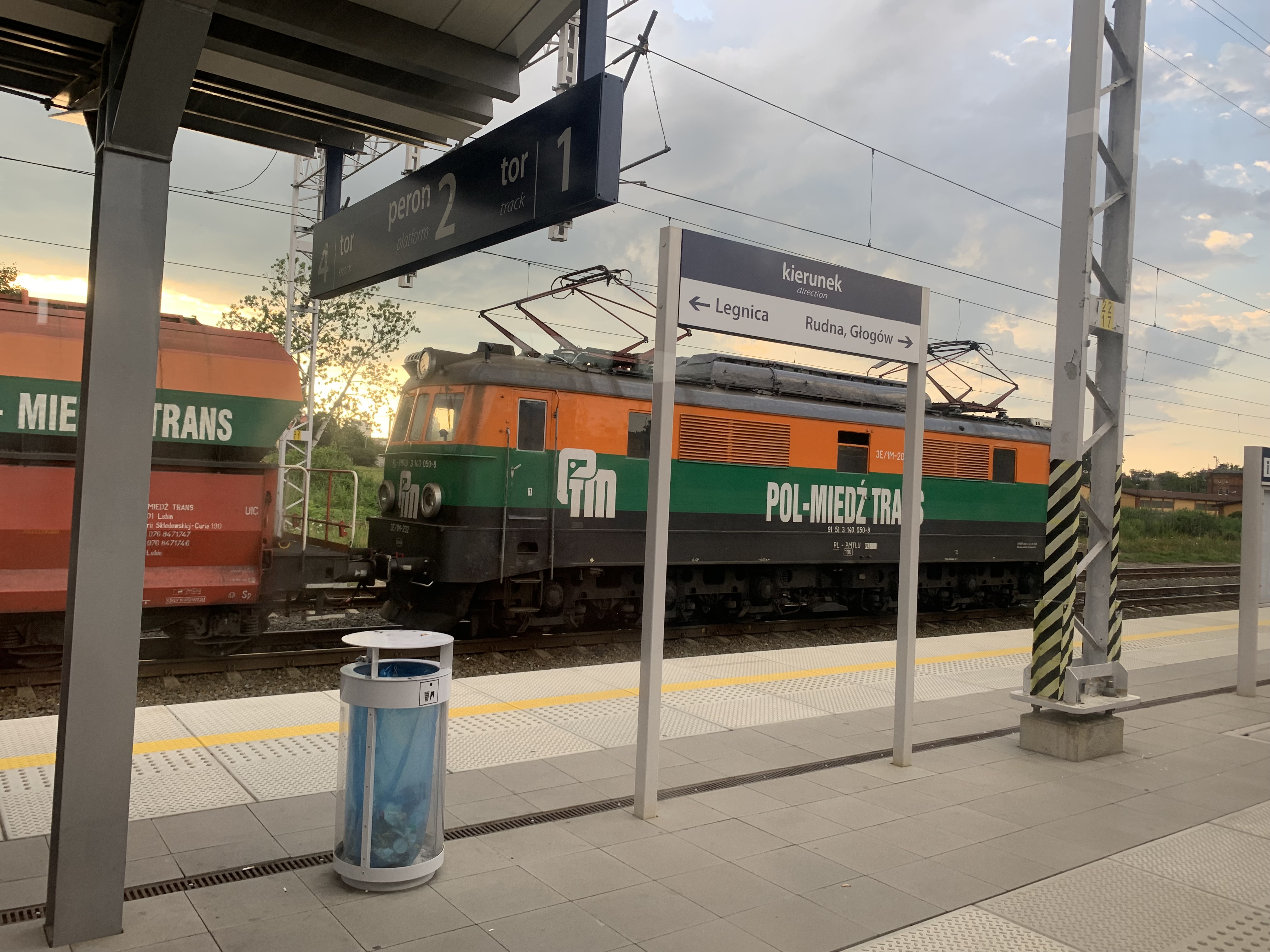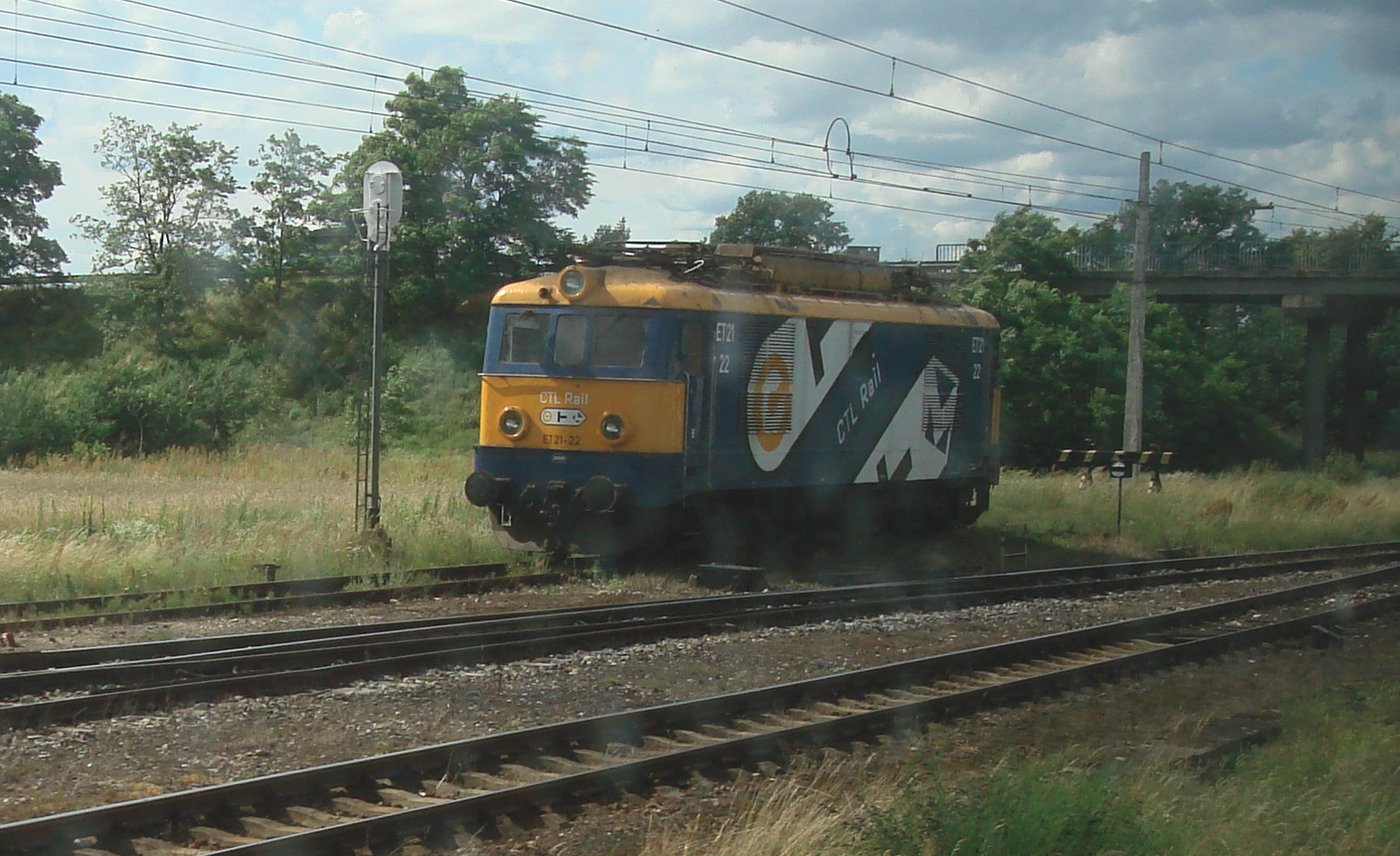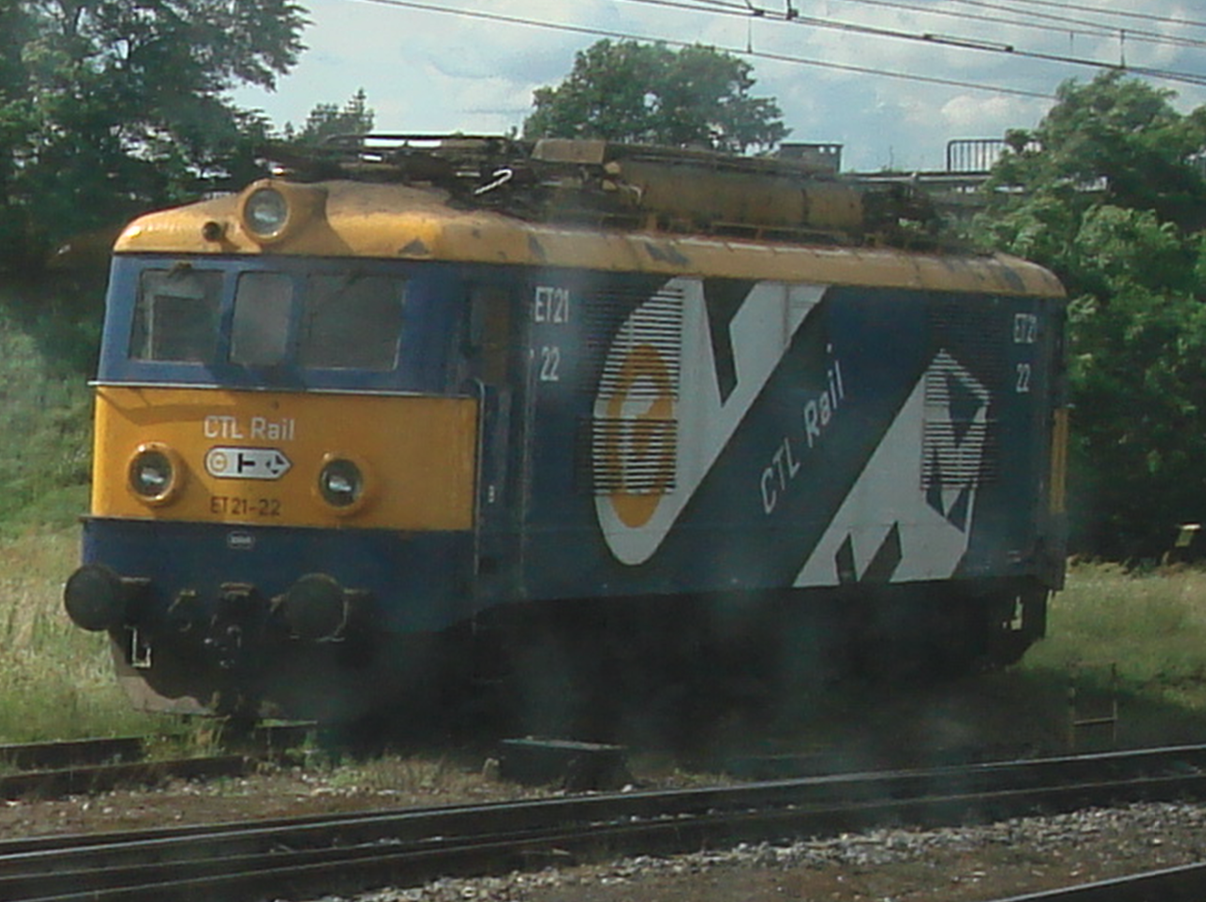Kraków 2021-09-27
Electric freight locomotive ET21.




The ET21 is the first Polish electric freight locomotive, which was mass-produced in the "PaFaWag" factory in Wrocław in the number of 726 copies. In 1955, in Poznań, based on the experience gained, an electric locomotive adapted to haul heavy freight trains was developed. The product was marked PaFaWag 3E, and subsequent versions 3E / 1, 3E / 1M. In PKP, the locomotive was marked ET21.
The ET21 is a standard-gauge electric locomotive with high tractive force. The locomotive was designed in 1957 at the Central Railway Rolling Stock Construction Office in Poznań. The electric part of the locomotive was modeled on the Russian design of the Wł22M. The locomotive has a Co'Co 'axis system. Each axle is powered by one electric motor. Electric motors of the LKa635 or LKb635 type were used, which were produced in "Dolmel" plants. The gear of the electric motor has a ratio of 85:24. Other electrical components were also manufactured in the "Dolmel" plants. The locomotive has forklift trucks which were considered outdated but acceptable at the time of design.
The locomotive's body is at the ends of the driver's cab. The cabins have all the necessary instruments to drive the locomotive and are electrically heated. The high voltage compartment has an interlocked door that can only be opened when the pantographs are lowered and grounded. The machinery compartment consists of a high voltage compartment, a low voltage compartment, a compressor system, a cooling system, and more.
Data T-T ET21:
Co'Co 'axis system. Length 16.82 m. Height 4.56 m. Width 3.00 m. Weight 121,000 kg (version 3E), 114,000 kg (version 3E / 1). Power supply from 3,000 V DC traction. Wheel diameter 1.25 m. Electric motor gearbox 85:24. Design speed 100 km / h. Westinghouse brakes (modernized Oerlikon). Two pantographs (current collectors).
Serial production was launched in 1957 at the "PaFaWag" factory in Wrocław. The first version of the Type 3E was built in the number of 72 copies.
In 1960, the ET21 locomotive underwent modifications. Locomotive carts have been improved. The suspension of traction motors has been changed. The braking system and the cooling system have been improved. The thickness of the floor and box plating plates was reduced, which resulted in the reduction of the locomotive's weight by 8 tons. The electrical system has been improved by replacing components with less emergency ones. A removable roof was used, which facilitated access to the equipment. The high voltage compartment can now be completely removed with the integral floor. There are now three windows on the sides of the box, not one, not counting the windows in the entrance doors to the cabins. Narrow ventilation grates were placed between the windows. Previously, there were two square large grates.
Production of the modernized locomotive, type 3E / 1, was launched in 1960. Another 589 locomotives were built. Production ended in 1971. Until 1971, a total of 726 locomotives of this type were produced, 658 of which went to PKP.
In PKP, the first 17 locomotives were designated E06 (E06-01 - E06-17). It was the old labeling system. Then all locomotives were marked ET21, according to the new designation system (RN-58 / MK0001 standard).
ET21 locomotives could not be driven in multiple traction. However, in the 90s, some new locomotive users introduced multiple traction. Several locomotives have been reworked this way. Some new users have undergone major upgrades on several locomotives and the designation has been changed to ET21M or 3E / 1M.
The first ET21 locomotives were directed to Silesia and to service trains that pulled trains to / from the Huta Lenina plant. They pulled wagons with coal, iron ore, steel products, aggregate and others. These locomotives were used, for example, in the sand mine in Szczakowa in Silesia. ET21 locomotives could drive freight trains weighing 2,300 tons at a speed of 70 km / h. The locomotives performed well on rough trails, with numerous ascents and descents and tight curves. The ET21 locomotives, despite the typical characteristics of freight traction, were also used in passenger trains and even express trains. Passenger trains weighing up to 700 tons of the ET21 locomotives pulled at speeds of up to 100 km / h. It was possible because the locomotives were equipped with an electric connection for heating passenger carriages. Train drivers liked the ET21 locomotives for their solid, simple and reliable construction.
The withdrawal of ET21 from PKP started in 1988. At PKP Cargo, the locomotives were still in use in 2015. In the 90s, several new companies bought many ET21 locomotives from PKP. Known as "Sputnik", "Kant", "Television" by railway enthusiasts and railway workers. The ET21 locomotives have been replaced by the ET22 locomotives.
Written by Karol Placha Hetman
